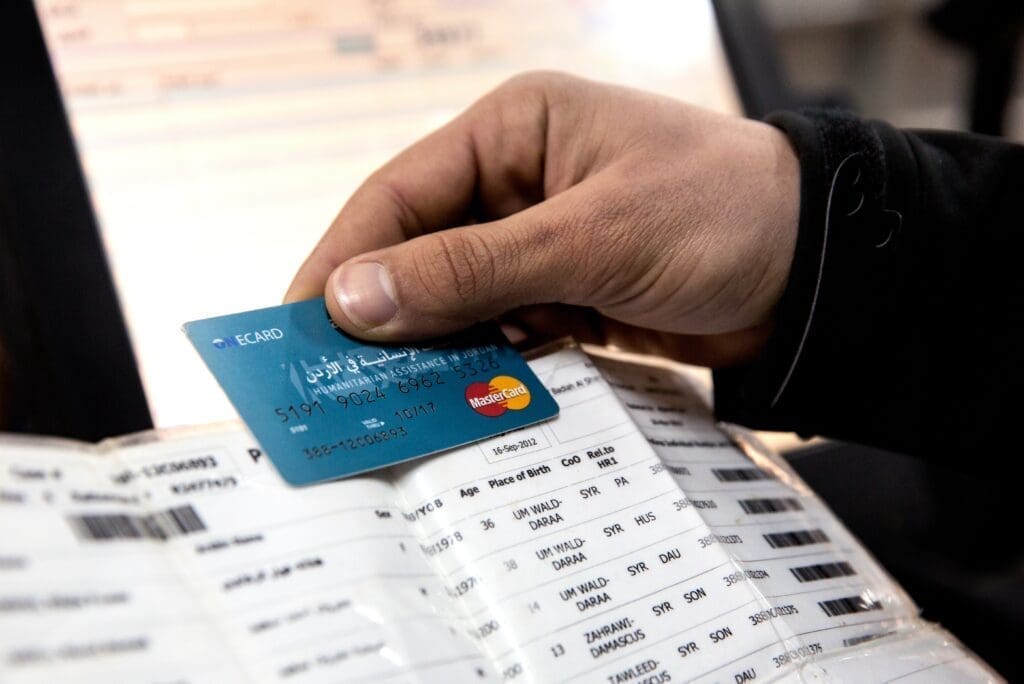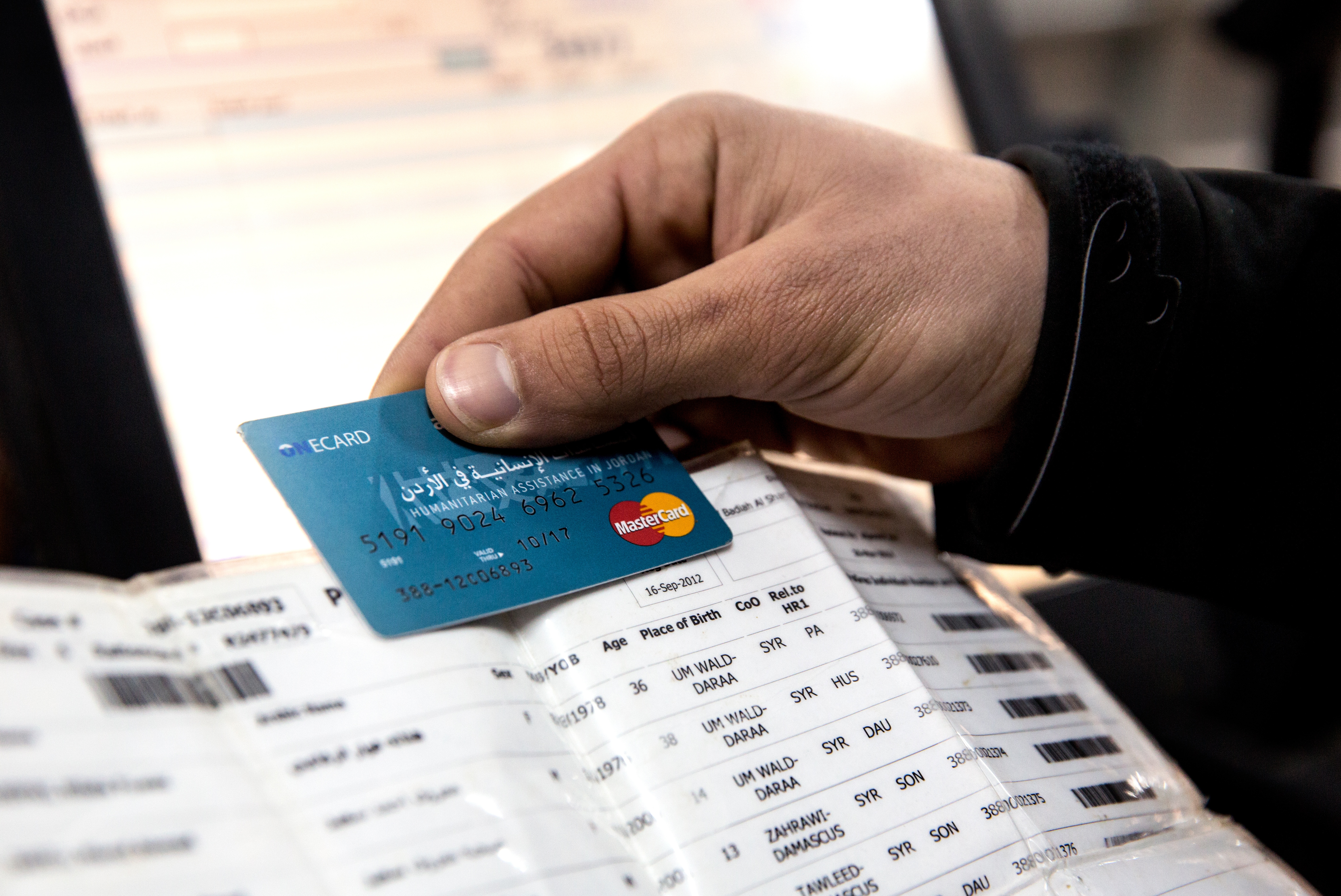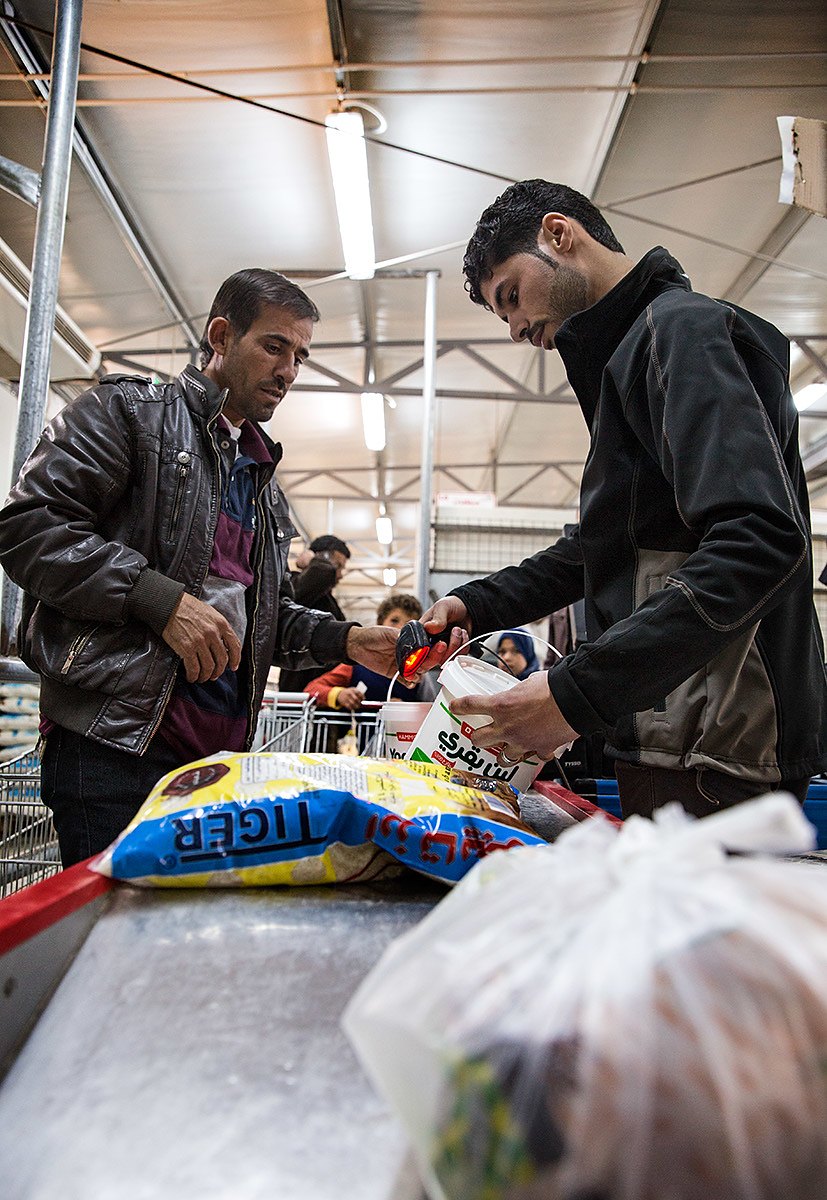
What WFP Delivers: Cash, Vouchers and E-Cards
When it comes to feeding people in need, aid agencies rely on the right food at the right time. That’s why the World Food Programme — the largest humanitarian agency fighting global hunger — tailors its food assistance to the specific nutritional needs and conditions of each community and crisis.
And in some cases, the right kind of food assistance isn’t actual food — it’s cash, paper vouchers or electronic food cards.
In places where local markets are functioning and food is available but unaffordable for the most vulnerable households, the World Food Programme (WFP) provides Syrian refugee families like Marouf’s in Jordan with paper or electronic cards. These can be redeemed in local markets for fresh food that includes meats, produce and dairy.

WFP/Ellie Kealey
These innovative e-cards — made possible through a partnership with Mastercard and launched in 2013 — have enabled WFP to:
- Save time and money on shipping and storage.
- Deliver aid to vulnerable families almost immediately.
- Expand the dietary diversity of those WFP serves.
- Restore dignity and choice for families purchasing groceries.

WFP/Ellie Kealey
These cards aren’t just helping hungry families either. They’re supporting local farmers, food producers and business owners by expanding their customer base and providing a reliable market for their crops and products.
From 2012, to 2016, for example, WFP’s e-cards injected over $1.3 billion into the economies of Syrian refugee host countries across the Middle East.




